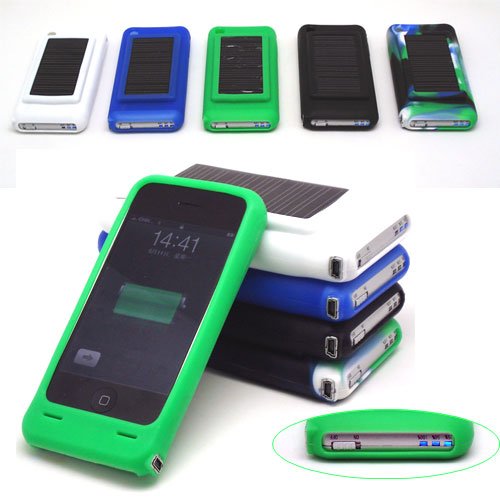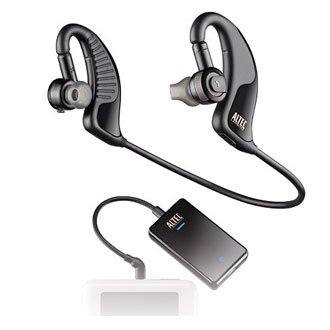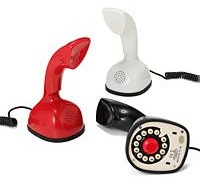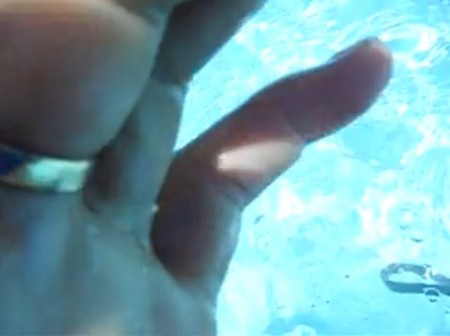Powermat Wireless Charging System
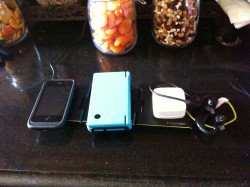 About two weeks ago, I got notice that the Powermat system was available for purchase. I went to Powermat.com, read up on it, added one mat and two iPhone cradles to my cart, and then hovered over the buy button for about five minutes. At $180, my highly impulsive gadget-buying urge was tempered, and I didn’t buy it. A week later, Powermat sent me an evaluation kit at no charge for review.
About two weeks ago, I got notice that the Powermat system was available for purchase. I went to Powermat.com, read up on it, added one mat and two iPhone cradles to my cart, and then hovered over the buy button for about five minutes. At $180, my highly impulsive gadget-buying urge was tempered, and I didn’t buy it. A week later, Powermat sent me an evaluation kit at no charge for review.
So I plugged in the charging pad, put my iPhone in the charging case, and set it on the pad. The pad chimed its acceptance, a charge LED went on, and the iPhone indicated that it was charging. Having seen Powermat’s viral video, I said (out loud, much to the chagrin of my wife) “It’s f—ing charging!â€
After using it for two days, I really like it but I’m still glad I didn’t pay for it. Despite how much I love the idea of it and the clever design, my recommendation is to wait until the price is down by half overall and until they have clip-on adapters or cases for at least three devices you own and use daily.
Clever design aesthetics permeate the entire system. The portable mat is a tri-fold device that comes with a magnetically closing case. There are buttons on the mat to control sound volume and LED brightness. The universal charger is small and comes with a magnetically coupled case that holds four of the seven tips included with it. The power adapter is designed to let you coil the extra cable around the adapter and clip it in, so your charging station looks tidy. Even the boxes that the system comes in exhibit excellent design.
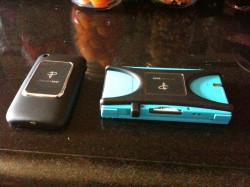 The only missed opportunities I noticed were the lack of a booster battery on the iPhone charge case, which would have sold me on the whole solution when I first looked at it, and the fact that the wireless charge receiver on the iPhone case protrudes about two millimeters from the case, which is annoying to my wife to the point that she’d prefer to use the upright iPod charger. I don’t mind it. In my opinion, the portable pad is a better value than the standard mat because it’s portable and I think it looks better.
The only missed opportunities I noticed were the lack of a booster battery on the iPhone charge case, which would have sold me on the whole solution when I first looked at it, and the fact that the wireless charge receiver on the iPhone case protrudes about two millimeters from the case, which is annoying to my wife to the point that she’d prefer to use the upright iPod charger. I don’t mind it. In my opinion, the portable pad is a better value than the standard mat because it’s portable and I think it looks better.
The mat contains coils that create a magnetic field. When you place a device that has a compatible coil on it, it induces a current in the device and that current is used to charge the device. Powermat adds some clever engineering to detect when devices are present to shut down when power is not needed, thus saving that 20% of power that would be lost to inefficiency when no device is present.
Unfortunately, you can’t just throw your iPhone on the pad randomly. You have feel around for the (strong) magnetic field and wait for the charge sound or your device might not couple correctly. iPhones are finicky about charge power unfortunately, and about 1/3rd of the time my phone fails to charge even when the mat thinks it should be. Removing and replacing the phone usually fixes it. I have figured out that placing the iPhone quickly with a slight circular wave helps find the right spot to couple better than placing the device straight down on the pad, and now that I’ve gotten good at it, the phone couples about 90% of the time. That’s 10% of the time less often than dropping it on my iPhone upright dock.
But you don’t want to spend $180 on a wireless charger to wind up with a system that is slightly harder to use than dropping your iPhone in a dock. Now, for devices less finicky than the iPhone, such as the Nintendo DSi (Powermat Charging Case for the DSi) and most current Blackberry models (except the Storm) it works a lot better. Its included charger adapter for other devices is light enough that the magnetic field pulls it to the right spot and it works every time.
The Powermat comes with an array of plug-in adapters for other devices. But avoiding the use of plugs is the point of the Powermat, so without a clip-on adapter that stays with the device, there’s little reason to use the Powermat over any other universal wired adapter. If you think of the Powermat as a tidy universal adapter charging station system with the ability to become a wireless charging system for a few of your devices, you’ll be really happy with it. Its plug-in universal adapter can charge nearly all of the devices I use on a weekly basis, including my Mophie Juicepack Air and my stereo Bluetooth headset. Only my Sony cameras and camcorders are left without a solution.
The Powermat is exciting technology. When the initial adopters have paid back the company’s investors and the Powermat company is comfortable reducing the price to be competitive with wired universal chargers, and the number of natively supported devices is in the teens, it’ll be a compelling purchase. Until then, it’s an interesting vision of the future that’s still firmly in the future for most consumers.
 This article from MSN talks about the recent occurrence of people being buried with their cell phones or iPods.
This article from MSN talks about the recent occurrence of people being buried with their cell phones or iPods.


